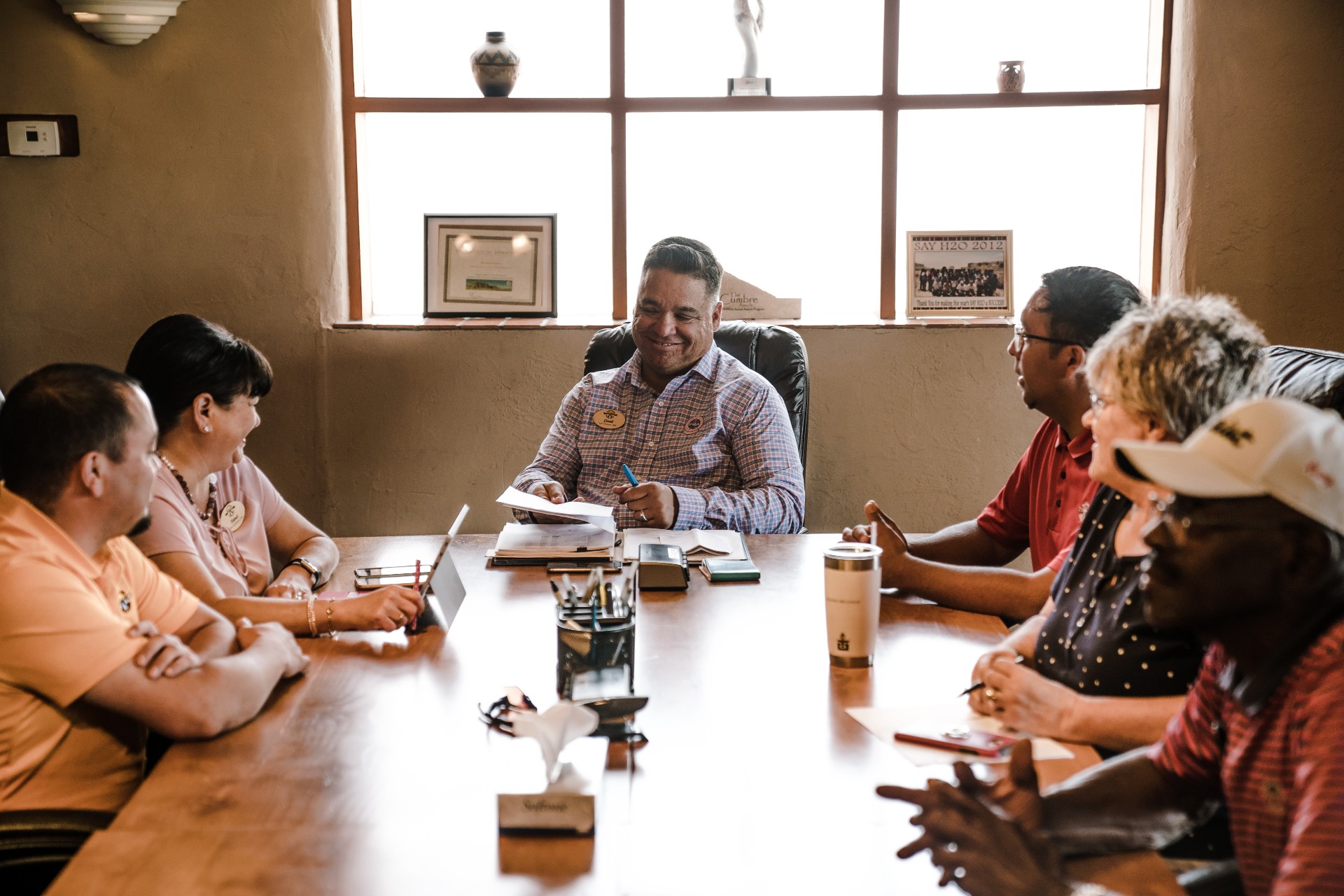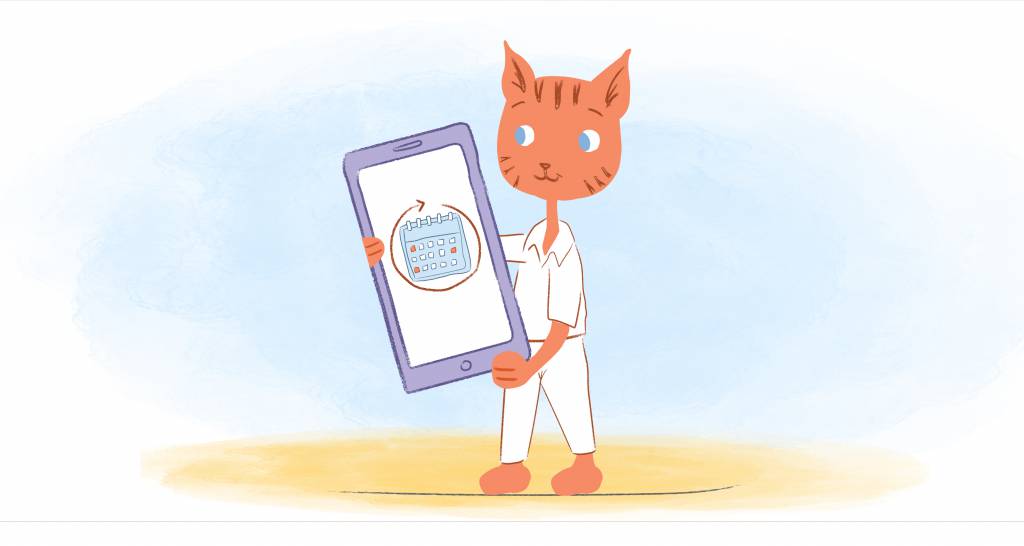

Even though the meeting was scheduled for 30-minutes it ended being closer to two hours long. For starters, it began five-minutes late. There was no clear purpose. Because there was no one to facilitate the meeting, the meeting dragged on and on. Worst of all? Because it started at noon, you missed lunch and are now completely miserable.
If you don’t want your meetings to be a horrible experience for attendees, here’s how you can host a successful and productive meeting.
Define the objective.
If you want your meetings to be successful you first need to determine its purpose. Think about what you want to achieve, as well as which type of meeting you’ll be hosting. Is it an internal brainstorming session with your team? Are you pitching your startup to potential investors? Or is it a client check-in?
Additionally, defining the objective will set the tone of meeting (will it formal or informal?) and the benchmark for success. One of the easiest ways to do this is being able to answer “What exactly are we meeting about?” in under five words.
In short, make sure you ask yourself if the meeting is worth having. This will ensure that the meeting won’t be a waste.
Bonus tip: Do you have a pre-existing template for the meeting you’ll be hosting? You can go ahead and use that template again — just make some updates like who’s invited. It’s going to save you a ton of time since you aren’t building it from scratch.
Invite the only those necessary.
Did you know that on average people spend 31 hours in unproductive meetings each month? “That’s precious time that could be spent on other projects and important work.
Therefore, to reduce this number, make sure that you only invite the necessary people needed at a meeting in order to achieve its initiatives and goals,” writes Rose Leadem in a previous Calendar article.
If you’re having a tough time narrowing down the amount to invite, use the “two pizza rule” used by Jeff Bezos. It simply states that you should “only invite the amount of people to a meeting that two pizzas can feed.”
Set and share the agenda.
Since you’ve already determined the clear purpose of the meeting and know who to invite, setting the agenda should be fairly easy. At the minimum it should include:
- Who’s attending and what their roles and responsibilities will be during the meeting.
- The items that will be discussed and action needed to accomplish the goal of purpose.
- The amount of time needed to discuss each item.
- A date and time for the meeting.
- Where the meeting will be located.
- Pre-work for the meeting, such as any reading or assignments participants must do before the meeting.
By setting your agenda you’ll be able to keep the meeting productive and organized. You’ll also have a chance to discuss the most important topics in the time allotted. After all, that’s the entire reason why planned the meeting in the first place.
After the agenda has been created, make sure that you send it the participants at least 24 hours in advance. Including an agenda when you schedule a meeting, is a great way to ensure that all attendees have enough time to prepare for the meeting.
For more on creating an agenda, check out this visual guide to a meeting agenda that actually works.
Location, Location, Location
Don’t underestimate the importance of the location of your meeting. After all, how successful do you think you’re meeting will be if you have 10 people crammed into a room that fits only six people? Or, let’s say you’re meeting with an investor or client for lunch at a steakhouse and they’re vegan. I don’t think that lunch meeting will go very well.
When planning you’re meeting, take the following into account when thinking about a location:
- Is the space large enough to accommodate the number of people invited?
- Does the space come equipped with the props you need? For example, if you’re hosting a brainstorming session you’ll need items like a whiteboard, post-its, and pens.
- Is the appropriate technology available and working? If you’ve prepared a slideshow presentation then you’ll need a projector and screen to display your presentation. It wouldn’t make sense to have a meeting in a location that doesn’t have this tech if you do. And, don’t forget to test everything before the meeting.
- Is it a suitable environment for the type of meeting you’re hosting? Meeting in a bland, windowless room for a brainstorming session isn’t the most conducive for ideation. Instead, pick a more creative environment where there’s plenty of natural light.
To Host a Successful Meeting, Eliminate distractions.
Between emails, texts, and social media notifications it’s not surprising that smartphones can be a distraction during meetings. This, of course, is an easy fix. Ask participants to either to silence their cell phones or put them aside.
President Obama had meeting attendees put their phones in a basket before entering a meeting — he had people place a post-it note on the phones so that everyone could easily identify and retrieve their phones at the end of the meeting.
However, even though phones get the most blame, research from Udemy has found that “small talk and office gossip” are the most popular reasons why people are disrupted during meetings.
Avoiding small talk and office gossip can be tricky, but here’s a couple of ways to avoid office gossip:
- Only vent to people you trust. If you have to vent about work, talk to someone outside the workplace so it doesn’t get back to anyone.
- Identify trigger situations and topics. If a colleague says something like, “I’m going to tell you something, but you can’t tell anyone else,” that’s a red flag that they’re going to share something juicy with you. It may be tempting, but it’s better not to engage in this conversation. Respond with something like, “I’m not great at sharing secrets.”
- Change the subject. Whenever someone starts to gossip, change the topic smoothly. For example, if colleague starts gossiping about what a co-worker did during happy hour, you can change the topic to something like how amazing the band was or how delicious the food was. If in a meeting, get the other person back on track by asking what they thought about the last topic discussed.
- Never repeat anything that shouldn’t be repeated. If someone does tell you a secret, keep it to yourself.
Break the Ice and Encourage Participation
If you’re hosting a meeting where attendees don’t know all each other, then you’ll want to break the ice as quickly as possible.
You can do this through techniques like:
- Speed-meeting. If there’s an even number of participants you can set it up where each person has 15 seconds to introduce themselves to someone else. Every 30 seconds one side of the table moves one seat over. This way everyone has met each other one-on-one.
- Creative name tags. Ditch the tired and traditional name tags and replace them creative name tags. For example, ask attendees to draw something that best describes themself.
- Play a game. You could play something like 2 truths and 1 lie where everyone must guess which statement is a lie and why they believe so.
Even if everyone in the meeting knows each other, you’ll still need to keep them engaged. You also want to make sure that they participate.
Here’s a couple of ideas to try out:
- Tell a personal story so attendees can relate to you.
- Ask questions throughout the meeting. You can also ask for everyone to share their opinions and feedback.
- Use images and video when discussing key points.
- Invite attendees to co-create and shape the content of the meeting.
- Surprise attendees with a shocking story or a surprise guest.
- Break participants into groups and have them work on a task together.
Be the host with the most.
Let’s say you received an invitation to a party and plan to attend. Because it’s a party, you assume that they’ll be some food and drinks. As such, you don’t eat before the party. Unfortunately, when you arrive, you notice that there isn’t anything to eat. Do you think you’ve going to have a good time when your stomach is growling?
The same can be said of meetings. You need to be the host with the most.
If you have a mid-morning meeting, provide some fresh fruit, yogurt, hard-cooked eggs, and coffee. If you’re planning a lunch or afternoon meeting stick with salads, small sandwiches or wraps containing lean deli meat like turkey. Of course, fresh fruit, nuts, and hummus are also solid options. If it’s meeting during the evening, definitely offer dinner.
Providing food will keep attendees happy. More importantly, it will also boost their brain power.
End with an action plan.
Finally, don’t forget to set aside the last few minutes of the meeting to discuss what happens next. This should be deciding who’s responsible for what. Don’t forget to also set a deadline for when these need to completed.
I’ve found that the the acronym W.W.D.W.B.W., which stands for “Who will do what by when?,” works perfectly for ending meetings with an action plan. Best of all, that can the subject line of your follow-up emails as well.











Albert Costill
My name is Albert Costill and I'm a content marketer at Calendar. If I can help people become more productive in my journey, even better. If you ever have a question about your Calendar or how you can use it - - don't hesitate to reach out. I'm a Calendar Pro.